Classic Pastry, room 302 with Chef Hernandez.
Day 1, I went into this class not very excited about my baking education. I was kind of deflated (if you will) in fundamentals, I suppose due to lack of challenge and new content. I also knew little about my chef, just that she was young and new to the school.
Well I was pretty pleasantly surprised. So far, she seems nice enough, although it is quite different to have a young chef.
Today was a very relaxed easy day. Our chef demoed how to make puff pastry dough, as well as all the fold involved. Puff pastry is like a croissant, it is laminated (alternating layers of dough and fat) however, puff pastry does not contain any leaveners.
Our chef showed us the old fashioned way, without mixers! And boy did we make a mess!
First Bread Flour and Salt are put on the table in a mound, and butter is cut in (just like a biscuit or scone) to the consistency of sand and until the mixture turns a creamy yellow color.
Chef Adding the Butter to the Flour & Salt
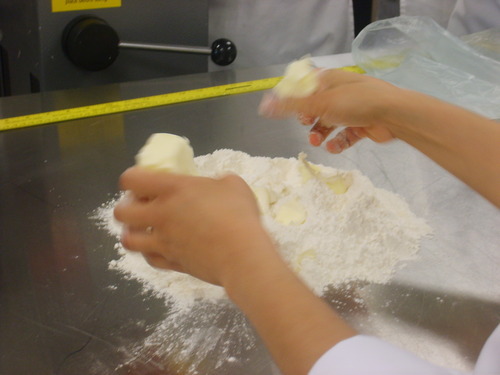
Once it has the consistency of sand, you make a well in the middle of the mound and slowly incorporate your egg and water mixture, keeping the middle dough very wet slowly adding more and more flour each time, until all the liquid is added (not all the flour will be added some of the time and the dough should be not very sticky)
Adding the Egg/Water Mixture in the well
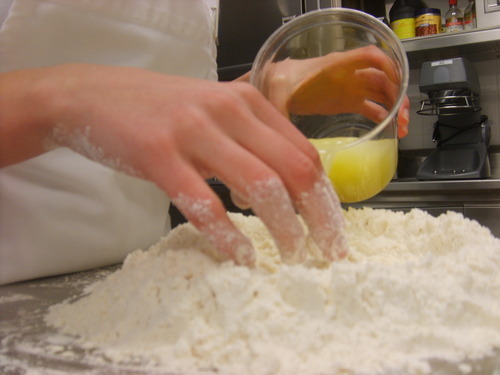
Mixing the dough by hand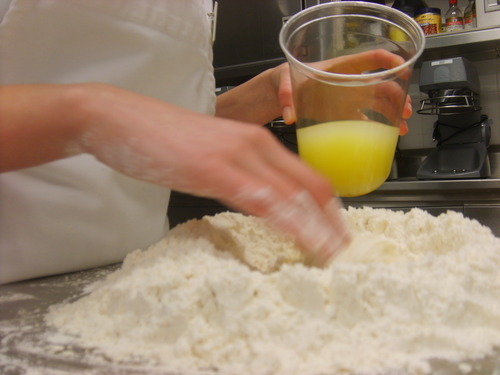
After the dough is formed, refrigerate the dough for 20-30 minutes until firmer and cold (ish). Meanwhile, create your roll in fat block. We used Plugra which is a European style butter (higher butter fat, YUMMM!)
Once the butter is scaled out, it is then pounded (into submission) to room temperature/ malleable. Then formed into a squarish shape. Then place the butter in between a piece of parchment, to help keep it from sticking, and use a rolling pin to roll the fat out into the desired size. ( 9 x 9 inches). When that is done, depending on your timing stick in the fridge or freezer, so the butter will stiffen up a little, but when removed will be malleable still.
When both are cold but at the same consistency, roll the dough out into a square of desired size (12 x 12) then place the butter block, so that it makes a diamond shape
Butter on top of the dough
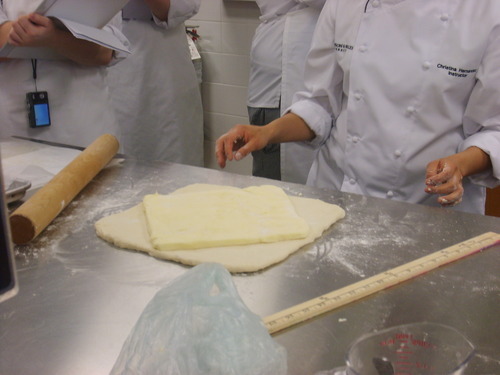
Then bring the corners of the dough up to the middle, like a pinwheel sort of. Then bring the seam together and seal all the way around. And then just lightly roll over the top with a rolling pin to smooth out the pinching.
Pinwheel Shape (starting to be pinched)
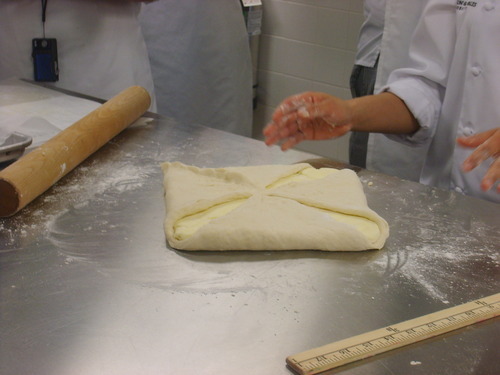
Pinching the seams together

Then roll the dough to be 12 inches wide by 20 inches long
Be sure to cut away any edge pieces that do not have butter.
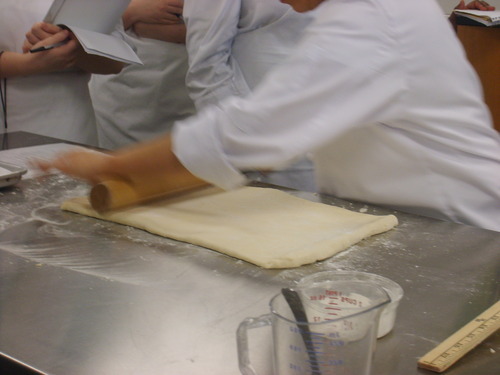
Fold the dough in three (this is called a tri fold)
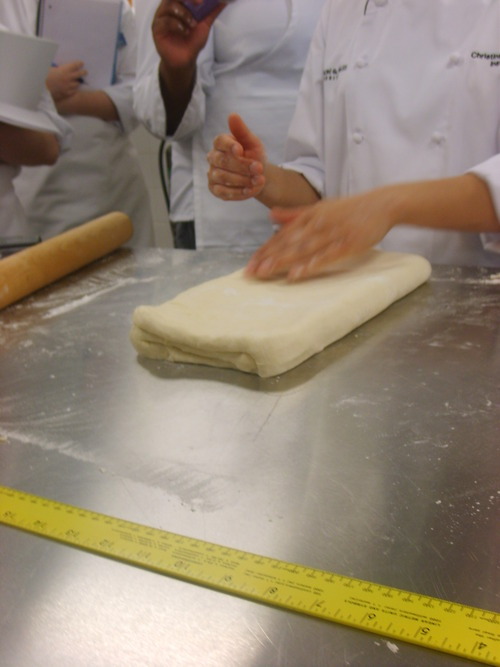
Once this is done, cover and put back in the cooler for 20-30 minutes . After that, you do a 4-fold, which is the same process except you roll it out to 22 inches long and 12 inches wide. Fold each edge to the middle line and then bring those pieces in together to create four layers.
4 fold
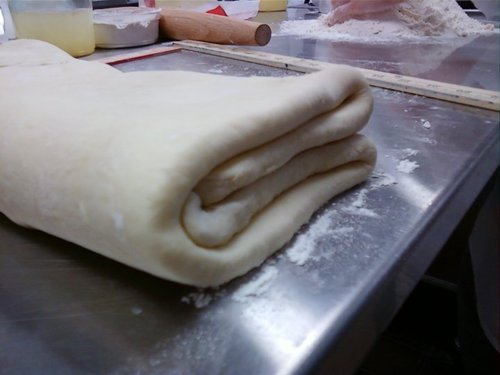
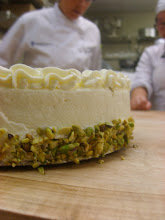
No comments:
Post a Comment